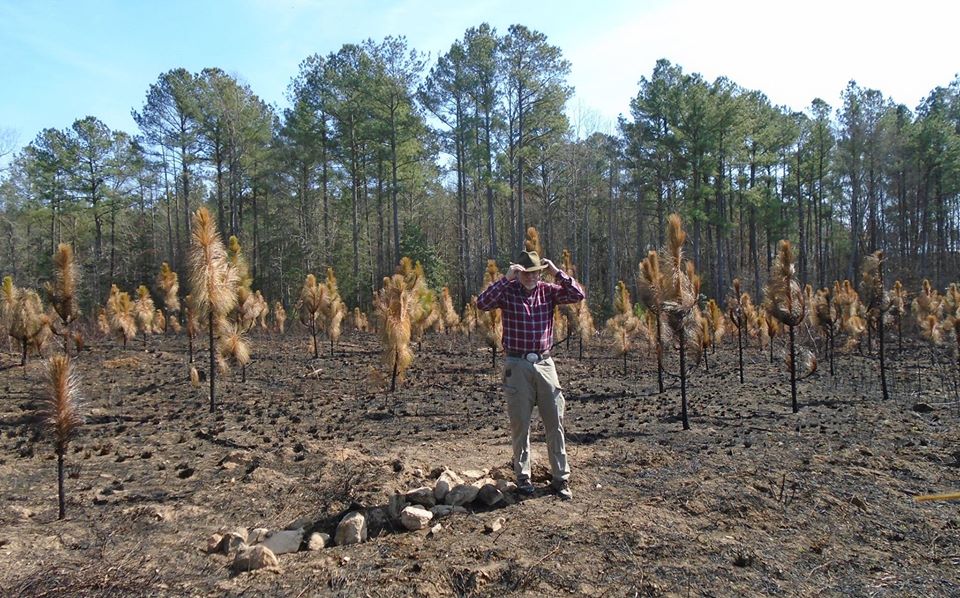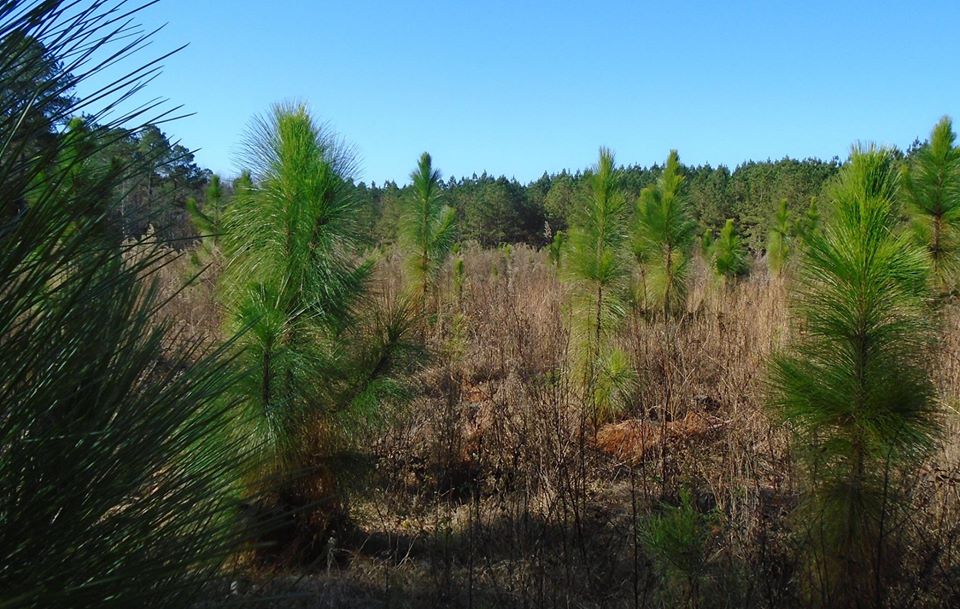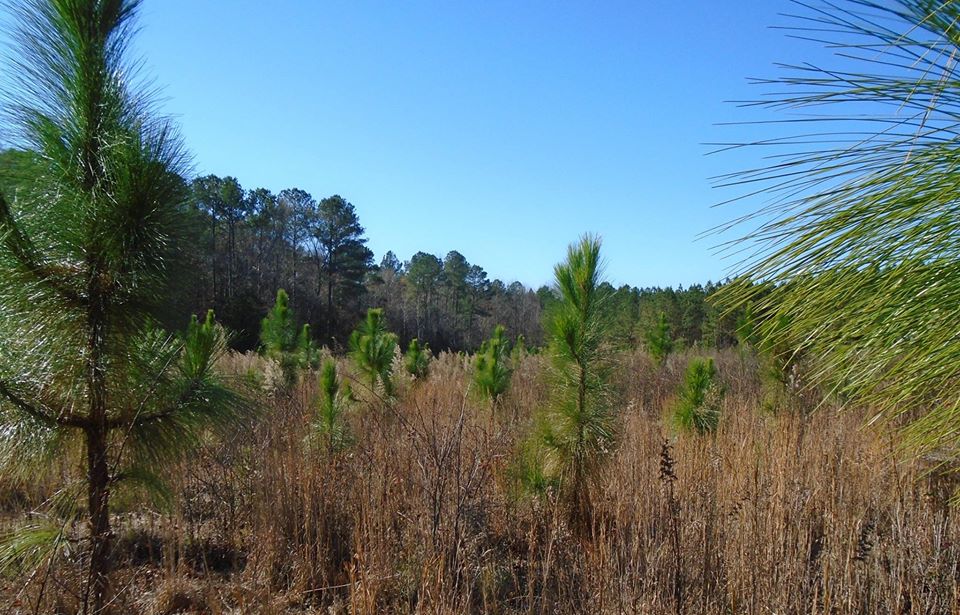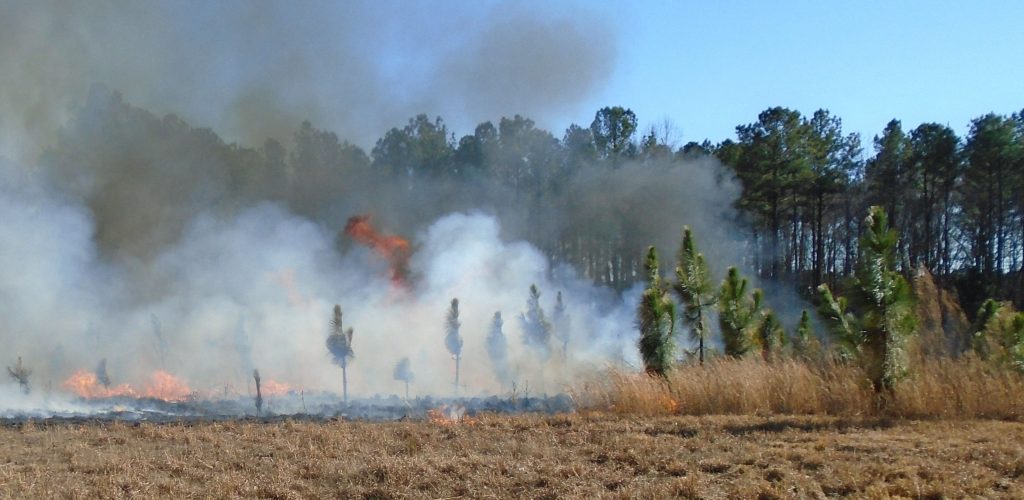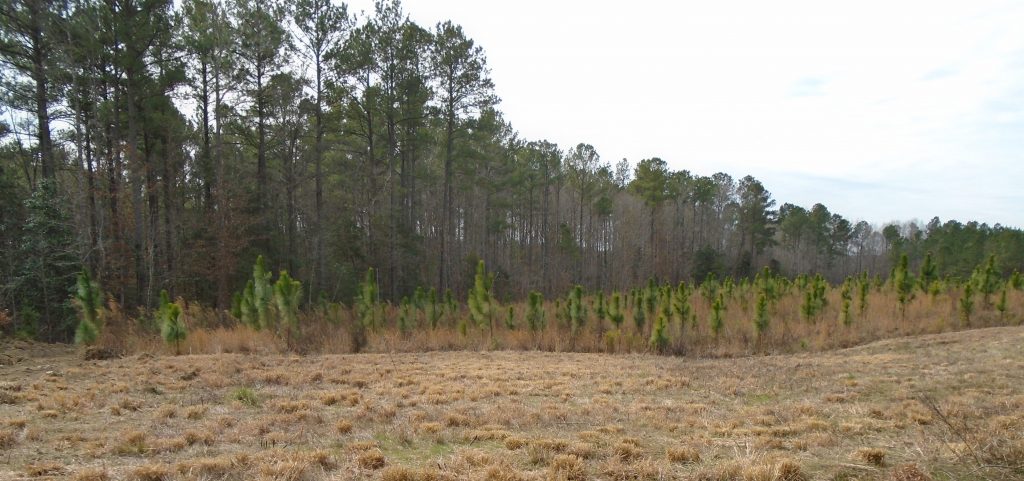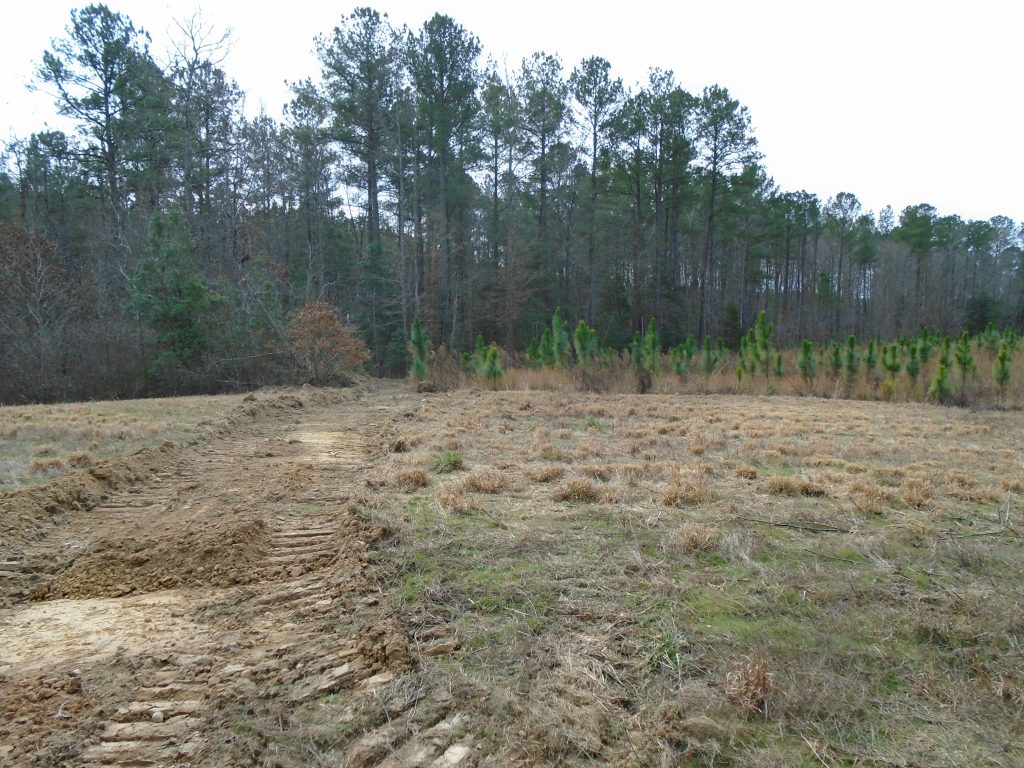Save
We did the prescribed burn under our 2012 planted longleaf. Longleaf and loblolly were planted at the same time. Loblolly are fire adapted but longleaf are fire dependent. I am reasonably confident that almost all the longleaf will survive the fire ant thrive. I will see about the loblolly. My guess is that most will be okay, but some will be thinned out. I am going to update every month with pictures and texts. My longleaf sit on the north and western edge of the natural loblolly range. I am interested not only in the tree themselves but also in what grows on the ground underneath.
The longleaf ecosystem is the most diverse in North America because it combines a prairie ecosystem with a forest.
I got to be there and I could “help,” but Virginia Department of Forestry did the real work, and they laid fire lines, which are the real determiners of success in fire. And they brought their bulldozer to stand-by just in case.
We started the fire at the fire line going against the wind – a backfire. The backfire burns slower but more intensely, since the wind is pushing it back. After there was enough black space, we started doing strips with head fires. Head fire go with the wind. They burn faster but not as completely. The head fire is what we want for longleaf. We don’t want it burning too hot. There was not too much wind and it change direction a few times, so whether we call them head fires or back fires was a little unclear.
The fire creates its own wind to some extent, since it sucks in air. Our fires were not very big, but they still had some of that. Fires also burn faster going uphill than downhill. This is because heat and fire, rise. Additionally, fire coming up hill pre-heats and pre-dries the fuel above. We do not have very steep hills on this unit, but the topography still made a difference.
Only one time did we get a kind of flare up. The fire was coming up a gentle rise and the wind picked up and shifted a bit at about the same time the fire hit a thick patch of broom sage. The flames were suddenly 8-10 feet high and coming in our direction. We had to retreat beyond the safe line, but it passed quickly.
Broom sage is a sign of soil infertility. This is okay on a longleaf site and my pines seem to be growing well. On the plus side, broom sage burns quickly and carries the fire w/o it making the fire hot enough to harm the trees.
Smoke was not much of a problem today, because we had the right kind of weather and a generally fast moving fire, but smoke is probably the biggest challenge to prescribed burns. People don’t like it and it can be dangerous and damaging. What you want is for the smoke to rise and then blow away, but this does not always happen. Some weather conditions can cause it to flatten out a few yards into the air and some even make it hug the ground. This seems counter-intuitive, but smoke can sometime flow, like fog down a gully and sometimes it can linger a long time, a real problem if there are nearby roads or houses.
Watching the fire hit the trees was interesting. They kind of burst into flames, but the fire passes quickly. The longleaf have an adaptation that lets them singe the needles while leaving the terminal bud interact. I walked around after the fire and observed that the buds were intact and ready to grow. I look forward to watching.
I talked to a guy down at the North Carolina Botanical Gardens. They have developed a recommended list of longleaf ground plants. These seeds are expensive but I might want to plant a half acre and let them spread. The NC guy told me that lots of the native species are probably already present in the area, especially because the area under the wires has been mowed regularly but otherwise left alone. The plants will soon colonize the longleaf patch if we just burn it regularly. Nature is resilient.
The whole burn took only about forty-five minutes. Of course, I am not counting all the preparation time. It is surprising (to me at least) how a conflagration, so quickly rise and how quickly it dies out. The key is to use up the fuel. You don’t have to put it out if it has nothing left to burn.
While the burning was going on, I was reminded of the story of Wag Dodge, made famous (at least in fire circles) by his fast thinking during a fire in Mann Gulch in Montana and by Norman Mclean’s best selling book about the incident “Young Men and Fire.” (Read my note about the book.)This fire killed thirteen firefighters. They were caught by a quick change in conditions as the fire chased them uphill pushed by a steep wind. Wag Dodge realized that he would be unable to outrun the fire, so he set his own fire in advance, and then hunkered down in the burned over black. He survived.
A fire burning mostly fine fuel, like grass, burning quickly and quickly passing. There is a wall of flame with a blackened place behind the flames and black is safe, since there is nothing more to burn.
I know that fire is necessary to the health of longleaf pine and I have all sorts of scientific reasons to want to burn the land. But I must admit that it is just fun to do. Fire is primal. I can almost feel the pulse of my distant ancestors using fire to hunt and create more hospital ecosystems. Our fire was not very dangerous, but it is still a little scary, watching that elemental force in action. It is always at least a little unpredictable. Interesting. I plan to do it every 2-3 years from now on.





